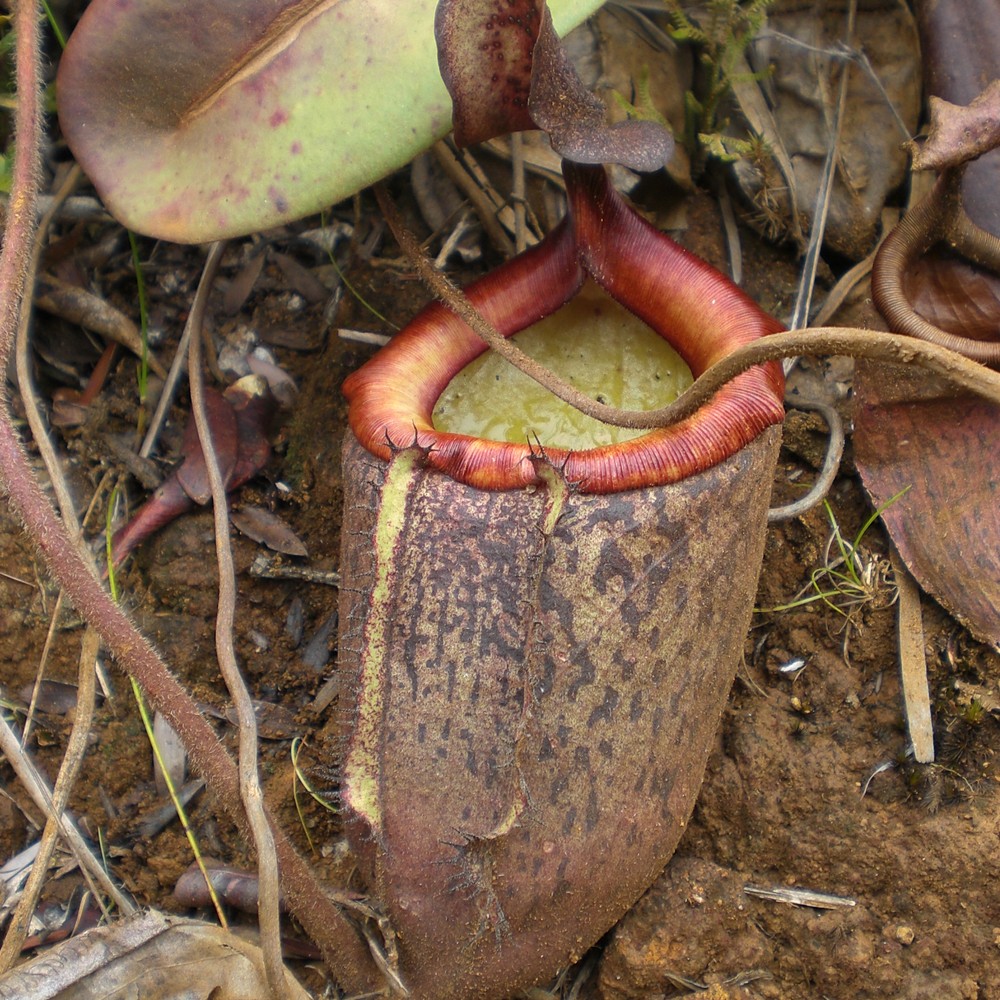Pitcher plant
(Nepenthes peltata)

Description
Nepenthes peltata is a tropical pitcher plant known only from the upper slopes of Mount Hamiguitan on the island of Mindanao in the Philippines. It is characterised by a peltate tendril attachment and conspicuous indumentum. The species typically produces ovoid pitchers with a prominent basal crest and large nectar glands on the lower surface of the lid. The specific epithet peltata is Latin for "peltate" and refers to the distinctive tendril insertion of this species. Nepenthes peltata is a scrambling plant typically growing to a height of 1 m, although stems up to 3 m long have been recorded. The species does not appear to produce a climbing stem. The lamina (leaf blade) is oblong in shape and reaches 50 cm in length by 9 cm in width. The apex of the lamina is rounded, while the base is abruptly contracted into the petiole, which is canaliculate and up to 7 cm long in mature plants. Young plants may have sessile leaves lacking a petiole. The lower surface of the lamina is often dark red in colour, contrasting sharply with the dark green upper surface. The margins of the lamina are sometimes curled upwards. Tendrils have a peltate insertion, with the point of attachment being up to 27 mm from the apex. Rosette and lower pitchers vary widely in morphology, ranging from ellipsoidal to urceolate or entirely ovate. They are relatively large, growing to 28 cm in height by 16 cm in width. A pair of wings (≤10 mm wide), with fringe elements up to 9 mm long, runs down the ventral surface of the pitcher cup. The peristome is approximately cylindrical and up to 2 cm wide. It bears ribs up to 1.5 mm high and spaced up to 2 mm apart, which may terminate in teeth up to 1 mm long. The pitcher lid or operculum is ovate to elliptic in shape and measures up to 8 cm in length by 6 cm in width. A triangular basal crest is sometimes present on the underside of the lid together with scattered giant nectar glands measuring up to 3 mm across. An unbranched spur (≤12 mm long) is inserted near the base of the lid. Upper pitchers of N. peltata have never been observed and are either very rare or absent altogether. It has been speculated that the species may produce aerial pitchers only in deep shade or if provided with sufficient vegetation to support a climbing stem, as is the case with the closely related N. deaniana and N. mira.
Taxonomic tree:







